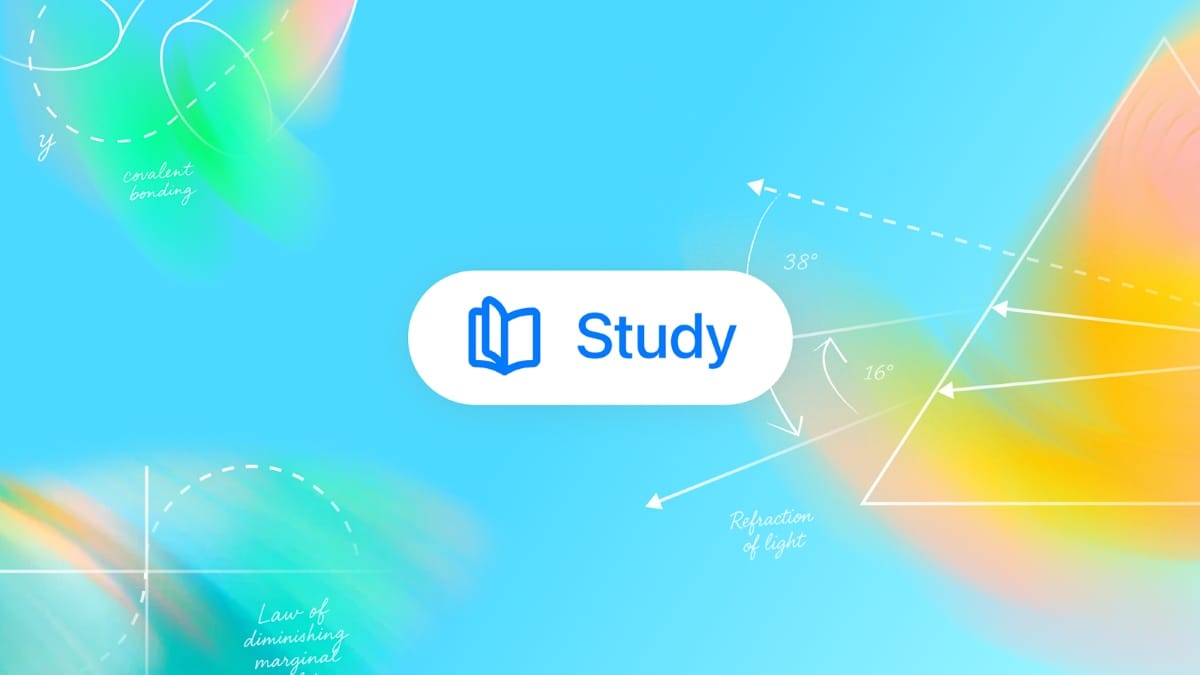OpenAI officially launched Study Mode in ChatGPT on July 29, 2025, transforming the AI tool from an answer engine into more of a digital tutor. Available immediately to Free, Plus, Pro, and Team subscribers, the feature guides users through problems step by step rather than simply providing solutions.
Developed in collaboration with educators from over 40 institutions, Study Mode employs techniques like Socratic questioning, where the AI asks leading questions to help users discover answers themselves. The tool also offers personalized hints and interactive quizzes to check understanding.
“Learning requires friction, it takes effort, curiosity, and grappling with ideas,” said Leah Belsky, OpenAI’s VP of Education, during a press briefing. “The question on our minds was how can we guide students toward using AI in ways that encourage true, deeper learning?”
The timing seems strategic – roughly one in three college-aged users already leverage ChatGPT primarily for learning purposes. The percentage of U.S. teens between 13 and 17 who use ChatGPT for schoolwork doubled from 13% to 26% between 2023 and 2024, according to Pew Research data.
Study Mode aims to address a growing concern among educators. When ChatGPT first launched in 2022, its use in school settings sparked fear among teachers, leading to AI bans in many American school districts. By 2023, some schools reversed course as educators recognized AI tools would inevitably become part of students’ lives.
A June 2025 study found that AI-generated essays correspond with lower brain activity compared to traditional research methods, raising questions about learning retention and critical thinking skills when students rely too heavily on AI assistance.
The new feature tries to address these concerns by refusing to provide direct answers unless students engage with the material. If asked directly for solutions, Study Mode reminds users that working through problems themselves leads to better learning.
Similar Posts
However, critics point out an obvious limitation – students can easily toggle Study Mode off when they want quick answers instead of guided learning. OpenAI acknowledges this reality, noting they currently don’t offer tools for parents or teachers to lock students into Study Mode.
“That means it will take a committed student to use Study Mode — the kids have to really want to learn, not just finish their assignment,” noted Maxwell Zeff in TechCrunch.
OpenAI plans to roll out Study Mode to ChatGPT Edu subscribers in the coming weeks, targeting classrooms where school administrators have purchased plans for student bodies. The company is working with experts from Stanford University to study how AI tools, including Study Mode, influence learning outcomes in K-12 education.
Study Mode enters a growing field of AI-powered education tools. Khan Academy’s AI tutor Khanmigo had 700,000 users across 380 school districts last year, while competitors like Google’s Gemini for Education and Anthropic’s Learning Mode for Claude are similarly enhancing their AI-driven tutoring capabilities.
For teachers like Nick Phillips, a math teacher at Trinity High School in Washington, Pennsylvania, the development is promising: “If a student can have scaffolding without having the teacher there, then that can be helpful for a lot of students that maybe just need a little bit more of a step-by-step process or just a study partner.”
OpenAI describes this release as “a first step in a longer journey” to improve learning in ChatGPT, with plans to add clearer visualizations for complex concepts, goal setting, and progress tracking across conversations in future updates.







